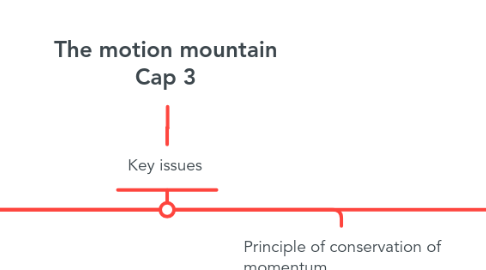
1. Key issues
1.1. Introduction to the law of action and reaction
1.1.1. Definition of Newton's law of action and reaction
1.1.1.1. the law of action and reaction of Newton is also known as the third law of motion. It represents a certain symmetry in nature: forces always occur in pairs, and one body cannot exert a force on another without experiencing a force itself. This law is often referred to as "action-reaction," where the force exerted is the action and the force experienced is the consequence or reactionThe law of action and reaction of Newton has practical uses in analyzing the origin of forces and understanding which forces are external to a system
1.1.2. every action has a reaction of equal magnitude but in the opposite direction.
1.2. Interaction forces:
1.2.1. Description of the interaction forces between two objects
1.2.1.1. Newton's first law of motion, also known as the law of inertia, states that an object at rest stays at rest and an object in motion stays in motion with the same speed and in the same direction unless acted upon by an unbalanced force
1.2.2. Examples of common interaction forces, such as gravity, friction, and electromagnetic forces
1.3. Principle of conservation of momentum
1.3.1. the total momentum of an isolated system is conserved
1.3.1.1. the total momentum of an isolated system is conserved, which is known as the law of conservation of momentum. This law is one of the fundamental principles of physics and is closely related to Newton's third law of motion, which states that forces always occur in pairs and one body cannot exert a force on another without experiencing a force itself. When two objects interact, they exert equal and opposite forces on each other, causing changes in the momentum of each object, but the total momentum of the system remains constant. The law of conservation of momentum is supported by experimental evidence and is one of the foundations of physics
1.3.2. Relation between the law of action and reaction and the principle of conservation of momentum
1.3.2.1. Newton's third law of motion states that forces always occur in pairs, and one body cannot exert a force on another without experiencing a force itself.
1.4. Force diagrams
1.4.1. Importance of force diagrams for visualising action and reaction forces
1.4.1.1. diagrams of force are important for visualizing the forces of action and reaction. Newton's third law of motion states that forces always occur in pairs, and one body cannot exert a force on another without experiencing a force itself. These forces cause changes in the momentum of each object, but the total momentum of the system remains constant. To understand the forces of action and reaction, it is helpful to draw diagrams that represent each force as an arrow in the appropriate direction. These diagrams can help to identify the action and reaction forces and to understand the physics of the situation. By drawing diagrams of force, it is possible to visualize the forces of action and reaction and to gain a better understanding of how they affect the motion of objects
1.4.2. How to identify action and reaction forces in a force diagram.
1.4.2.1. Draw a diagram of the object of interest, representing it as a point and situating it at the origin of a coordinate system.
1.4.2.2. Include all the forces that act on the object, representing them as vectors. Common forces include weight, applied force, normal force, friction, tension, and spring force.
1.4.2.3. Do not include the net force on the object.
1.4.2.4. Identify the pairs of action and reaction forces for each force acting on the object.
1.4.2.5. Convert the free-body diagram into a more detailed diagram that shows the x and y components of a given force, if necessary.
